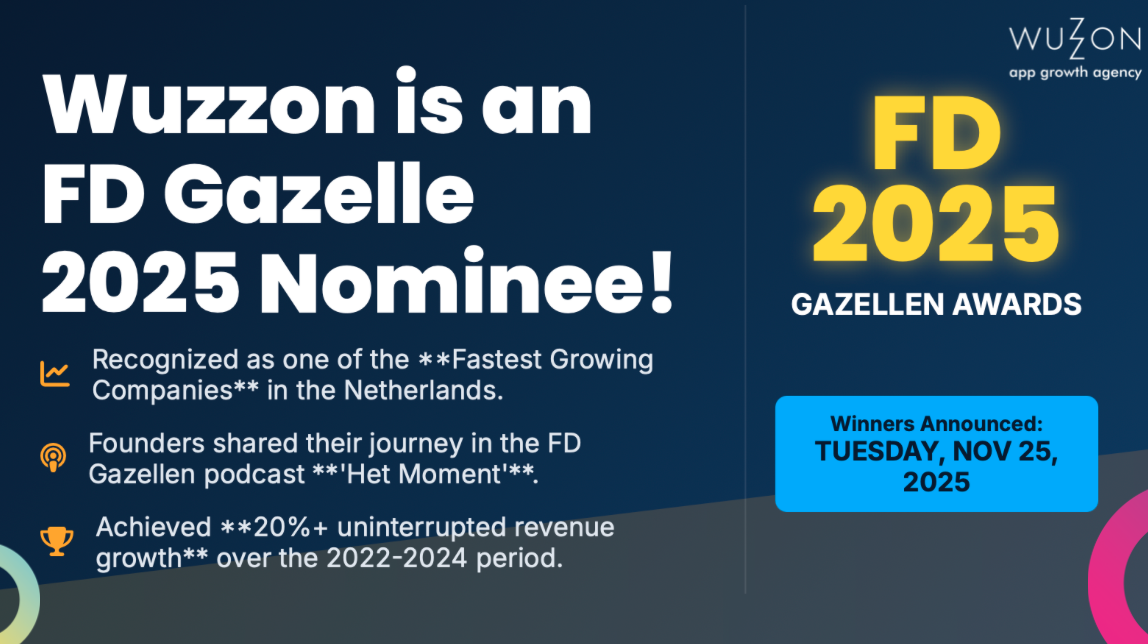By Louise Verschuren
Every year, you face the same challenge: how do you break the cycle of “doing” and start strategically building predictable, sustainable app growth?
As an app growth specialist and a Scaling Up coach, I’ve seen countless companies struggle with meeting chaos and strategic misalignment. Our annual planning framework is designed to solve exactly this, ensuring that every daily action—from a campaign tweak to a new feature—is perfectly aligned with your long-term success.
We call it: The Wuzzon Mobile App Growth Framework.
The Problem: Chaos vs. Commitment
Before diving into strategy, let’s talk about engagement. I’m currently obsessed with a game called Royal Kingdom—I’m doing 200 levels a week! That dedication is the feeling we are all chasing for our users. But you can’t engineer that kind of retention if your internal teams are constantly focused on disparate goals like downloads, clicks, and revenue.
If your strategic rhythm is broken, you get chaos. Annual planning shouldn’t be a chaotic brainstorming session; it should be your app’s annual physical exam. We check the heart rate (retention), the blood pressure (CPIs), and define the long-term health plan (your BHAG).
The 5-Step Blueprint for 2026 Success
We’ve merged strategic discipline with tactical mobile expertise to create a five-step annual planning process. This framework ensures your annual plan is not just aspirational, but actionable across the entire user lifecycle (Get, Activate, Keep, Grow).
Phase 1: The Retrospective Phase (Steps 1 & 2)
We start by looking backward to sharpen our focus forward.
Step 1: The Reality Check (Lessons Learned) This is your “Techno-Therapy” session. We must be brutally honest about 2025:
- Plan vs. Reality: What did we plan to achieve, and what were the actual results?
- Growth Levers: What unexpected creative angle, ASO niche, or referral program was a surprise success? We must double down on these.
- Energy Drains: What campaigns or projects demanded constant time and budget but failed to move the needle? Identifying these frees up resources for high-impact 2026 initiatives.
Step 2: The Destination (Align BHAG) Immediately after the reality check, we zoom out to the 10-25 year goal: your Big Hairy Audacious Goal (BHAG). Is your app’s mission as bold as Duolingo’s (“To develop the best education in the world”) or Spotify’s (“To unlock the potential of human creativity…”)? Your BHAG must be compelling enough to pull your team forward, even when the quarterly numbers are tough.
Phase 2: The Focus Phase (Step 3)
Step 3: The Compass (Find the North Star Metric) This is the Critical Success Number that defines success for 2026. If you can’t measure it, you can’t manage it.
This single metric cuts through silos. If your Downloads team chases downloads and your Product team chases feature adoption, you have chaos. Your North Star, often Monthly Active Users (MAU), must be the one number that represents the health of your entire app. When MAU grows, you know you successfully got users, activated them, and kept them engaged.
Phase 3: The Execution Phase (Steps 4 & 5)
Finally, we translate the North Star goal into tactical actions across the full user journey: Get, Activate, Keep, and Grow (G.A.K.G.).
Steps 4 & 5: The Action Plan (Align KPIs and Initiatives) The North Star breaks down into measurable KPIs for each phase, which in turn dictate your high-impact initiatives.

Phase | Core Goal | High-Impact Initiatives |
| 1. Get Users | Increase discovery & installs. | Launching Custom Product Pages (CPPs) linked to campaigns to lower Cost Per Install (CPI). |
| 2. Activate Users | Ensure a great first experience. | Implement progressive onboarding to collect First-Party Data, followed by hyper-personalized deep links to the right feature. |
| 3. Keep Users | Drive recurring usage & retention. | Use Predictive AI to forecast churn risk and automatically trigger re-engagement pushes or in-app messages to high-risk users. |
| 4. Grow Users | Maximize Lifetime Value (LTV). | Implement Subscription Optimization using tools like RevenueCat or Adapty to A/B test paywalls instantly, and use personalized perks for intelligent win-back efforts. |
Organizing for Success: The Workshop Blueprint
To make this framework work for your team, focus on organization:
- Preparation is Homework: Before the session, mandate that teams compile data on failures, successes, and customer feedback. No time should be wasted searching for data during the meeting.
- Facilitation is Strict: Time-box every step religiously. Use an Impact vs. Effort matrix to force prioritization. Only initiatives that are high-impact and low-to-medium effort should be prioritized for Q1.
- Follow-Up is Critical: Every initiative must have one named owner and a clear deadline. The Annual Strategy must then inform your daily, weekly, and quarterly check-ins—ensuring your MAU North Star is always in view.
Stop guessing your way to growth. Like playing Royal Kingdom, success requires looking ahead, calculating the cascades, and focusing on the next best move. Let’s make 2026 the year you engineer predictable, scalable LTV.



